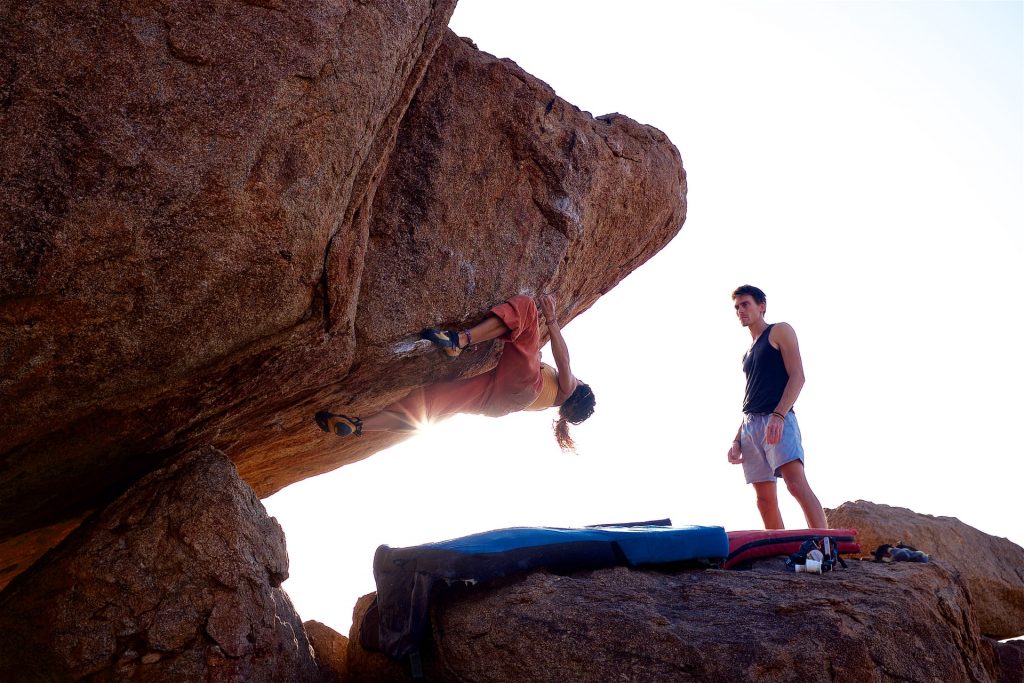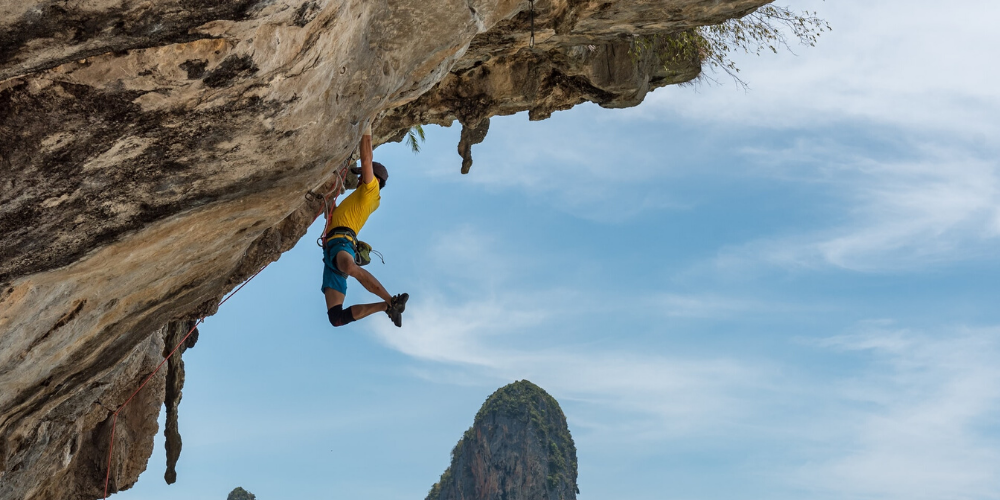At one point of the other, every amateur climber has asked this question, ‘what should I do with this climbing hold?
There is nothing to be ashamed of! Every single new climber has gone through this experience, wondering in between their climb what they are supposed to do. There are some types of climbing holds that make sense to you, where you know your hands go. But there are some holds that look like they’re designed to make your life difficult. But let me tell you, they’re there for the exact opposite purpose.
This is because there are different ways to tackle different types of holds. And understanding that will make your climb a lot easier. Once you understand these techniques, your climbing experience will change completely.
If you want to make significant improvements in your climb, then learning the tackling techniques of holds is a great way. Once you read this article entirely, you will complete the majority of the work.
Then the next time you come across a hold, you won’t have to be intimidated by it and you’ll know how to use it skilfully.
Different Types of Climbing Holds

Note: Before I mention the different kinds of holds, let me explain a term I will be using- positivity. Positive doesn’t mean its emotional well-being, but it is a way of describing the strength of the edge for you to hold onto it. For example, a flat surface doesn’t have any positivity. Having said this, let’s jump straight into the classification of the holds.
Jugs
You have probably already seen this. Jugs are considered to be every climber’s best friend. Jugs are very easy for your hands to get around and they are big and open in nature. You will find this jug holds on every route for beginner climbers.
These jugs are often used to offer resting spots in the middle of a long or difficult climb. Thus, keep this in mind when you are on an advanced route and come across such a hold.
Incuts
Incuts, also known as mini jugs are there for you to wrap your fingers around them. They look exactly like jugs, but smaller in size. There is no rocket science here. You just need to wrap your fingers around the positive edge of the incuts.
Crimps
Crimps are probably relatives of the devil. Not to scare you, but just with the intent of showing you the reality, crimps put a ton of pressure on your forearms. If you are not used to crimps and are a new climber then you will lose your strength of your finger tendon very quickly. You will also lose the ability to grip anything at all for a few days.
If you want to exhaust yourself less quickly, then make sure to use a grip that is open handed to put on the narrow positive edge. Even though you might get less power this way, it is better than having no power at all.
You should rest your hand flat against any surface you can find and put your fingertips on the edge of the crimp.
But if you are at an advanced level and want to use the full crimp, then keep your hand straight, tuck your fingers inside in a way that they are straight at the first knuckle and bent from the second and third knuckles. We would suggest that you train your finger tendons and make them stronger before you jump to crimp.
Once you get the hang of it, you may feel that it is easy. But that’s not the case. It is easy to overdo. So, try it, but stop before it gets too hard on your fingers.
Edges
Edges or ledges can be found very easily in outdoor climbing. They are similar to crimps but have comparatively more space on the positive edge. You will just have to make sure that your arms are extremely straight and loose while climbing edges. This will also keep the tiredness to the minimum.
Slopers
Slopers are rough as they are huge and have no positive edge at all. Yes, zero positive edge at all. You will be completely dependent on the friction if you want to pull yourself. And so, you will have to keep your hand as straight and flat as possible near the hold in order to expand the surface area of the skin with which it is contacted.
When using slopers, it is very important to have a proper body position. You should make the centre of gravity of your body extremely close to the wall. If your angle is far away from the wall, then the result will be you trying to pull away from the hold at an angle more than 180 degrees. This would mean that your grip from the sloper will be reduced to half as well. This is something that no one wants.
So, if you come across some slopers on any route then keep a lot of chalk with you and cover the entire surface area of your hand with the chalk.
Pinches
Pinches are a bit of good news, bad news. Pinches have two edges but they are vertical. This also means that you will depend on the friction if you want to pull yourself up. Although the positive edges are not of much use by themselves but when used both the holds together in a pinch formation, the hold becomes useful.
Your thumb makes a lot of difference when it comes to the grip of a hold. Your thumb adds power so that you can pull yourself up very easily without having any issue with not getting proper friction.
And this is exactly why your thumb should be used to make the pinch formation on the hold if possible.
Volumes
You will easily find volumes in indoor gyms. Volumes can be used on any kind of route. Some gyms have rules that come with volumes. Volumes can be used in those gyms only if the holds are coloured in a specific colour. To avoid any confusion, you should ask the staff before you start climbing.
Volumes can be used in different ways. You can push them or mantle them as per your fit. The good thing is there is no right or wrong answer as volumes are very different from one another. The only thing you will have to keep in mind is to use them as much as you can as the volumes will make your climb better. They’re like your well-wishers, helping you and making your climb better.
Pockets
Pockets can be tricky too. If you didn’t know how to use them then you would want to use the top as probably a sloper without a grip. You will notice that unlike other holds, pockets don’t have the same grippy texture. This is for a reason. You are supposed to utilize the hole that is present in the middle instead of holding the outer edges of pockets.
There might be a drawback that not all your fingers can fit in the pockets. If yours do, then great. But if they don’t then we have a trick for you. The trick hides in which fingers to use. If you can fit most fingers then that is of course recommended. But you should prioritize your middle finger. This is because it is stronger than most fingers. So, if you can just fit in two fingers in the hold then we suggest you use your middle and ring finger. If you want a little extra grip then use your thumb to pinch the hold.
Underclings
You can easily spot under clings while doing outdoor climbing. They are very unusual looking and unusually structured as well. The only way to get a grip on it is by holding them from underneath. This is because the positive edge of underclings are parallel to the wall.
Because of its structure, you can use underclings only when you find the hold near your midsection. If you hold it any that is high, then you won’t get a proper grip. If you hold it at the correct height then it will be easier for you to pull yourself up.
Horns
Horns are an all-time favourite of climbers. They are similar to jugs but they have a few features that make them different from jugs. You will have to grab horns from the side, which will allow you to find leverage. You will also be able to turn sideways in order to reach the other hold. You should use this whenever you can.
There is another advantage about horns. If you are grabbing the horn that is far from you then you can easily get your hand near the sloped and positive edge.
Conclusion
Unfortunately, no one has the superhuman strength or upper body. Everybody wants it, but it isn’t possible. The great news is that for most of us, our lower body strength is more than that of the lower body. Whatever you learnt about the grips, always remember to keep your bodyweight centered when you climb. This will help you take some pressure off your upper body.
So read about every hold, know everything about how you can use them and practice before you throw yourself into advanced routes. There are plenty of tutorials available online that you must go through in order to become a pro. And in case if you ever have any doubts, then ask your trainers in the gym. They will definitely help you out. Now go ahead and grab the opportunity to boast about your knowledge of holds.

